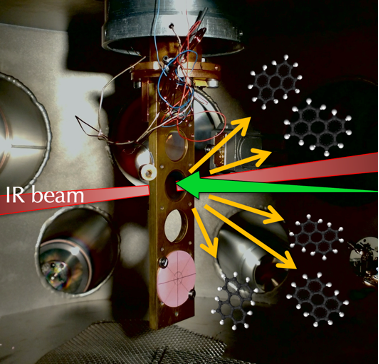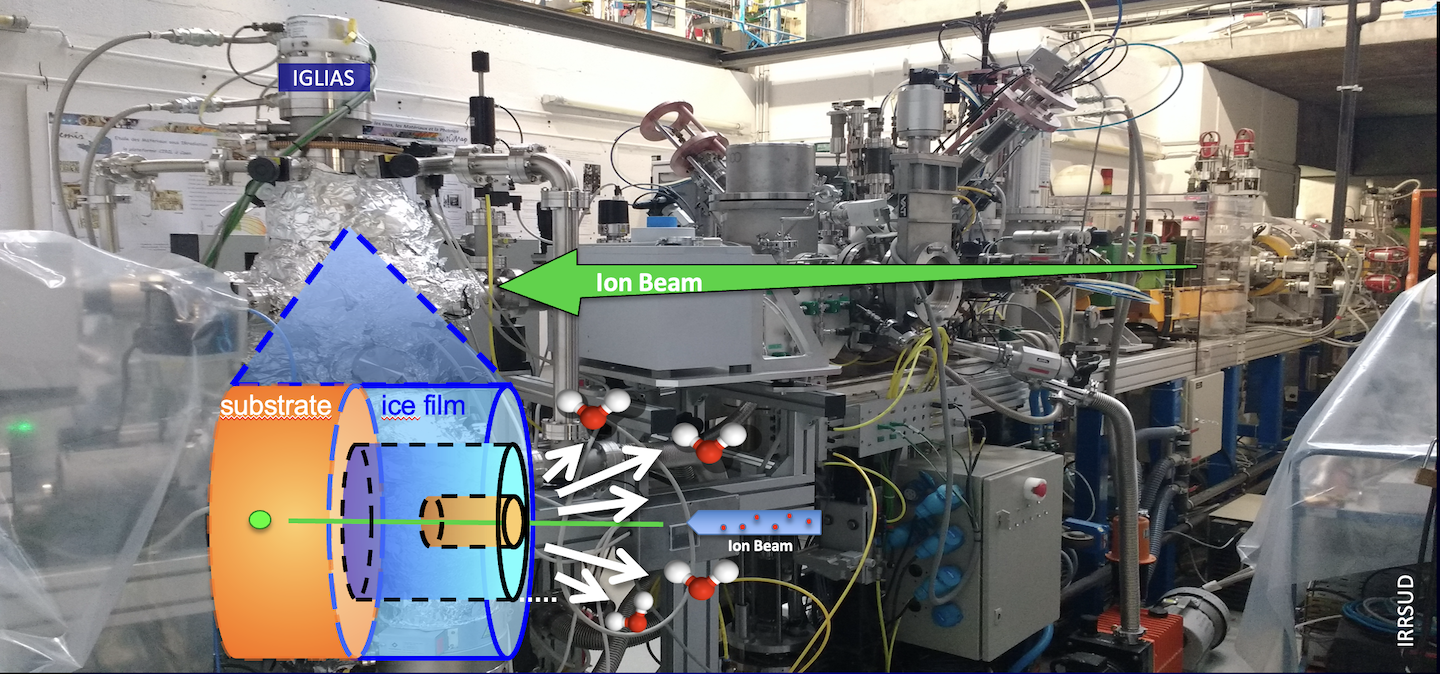We study the physics of ion-matter interaction and chemical evolution induced by energetic ions using swift ion accelerators. The aim is to study the impact of irradiation and sputtering of interstellar solids exposed to cosmic rays (interstellar carbonaceous matter, but also other molecular solids such as interstellar ices present in the densest phases of our Galaxy).
In the cold conditions prevailing in dense molecular clouds, gas-phase molecules and atoms are condensed on the surface of interstellar grains. Given the time scales and physical conditions prevailing in these dense phases, some of these molecules must be transferred to the gas phase to explain their observation by telescopes in the millimeter range. The preservation of these species in the gas phase in relatively dense environments is puzzling, as they should condense on cold dust grains on short time scales. This should be even more constraining for the largest species. The relative contributions of the various desorption mechanisms are therefore of crucial importance in constraining the chemical evolution of interstellar regions using astrophysical models, particularly in these dense clouds. Cosmic rays are high-energy accelerated particles (atomic ions, mainly protons to iron in the energy range from MeV to TeV). They are a major source of desorption to explain the presence of complex organic molecules in dense clouds. To understand and quantify the efficiency of this process, we are simulating it in the laboratory under astrophysical conditions.
Irradiation of laboratory analogues with ions in the 1-500 MeV energy range, and its monitoring (solid phase monitoring by infrared spectroscopy and gas phase monitoring by mass spectrometry) provide important information for simulations of cosmic-ray effects: these experiments can be used to quantify sputtering rates. The astrophysical processes thus measured in the laboratory are widely used in the astrophysical community to model the evolution of the interstellar medium.

Photo of an irradiation chamber with molecular films of aromatic polycyclic molecules as targets. Under ion bombardment of an accelerator beamline simulating cosmic rays (here at GSI, Darmstadt), these large molecules are sputtered from the surface. The modifications in the films induced by the ion beam are monitored in situ in solid and gas phase by infrared spectroscopy and mass spectrometry.

Experiments simulating cosmic rays on accelerator (IRRSUD line at GANIL, Caen) to measure the sputtering of interstellar ice analogues.
Contacts:
Emmanuel Dartois
Marie Godard
Thomas Pino